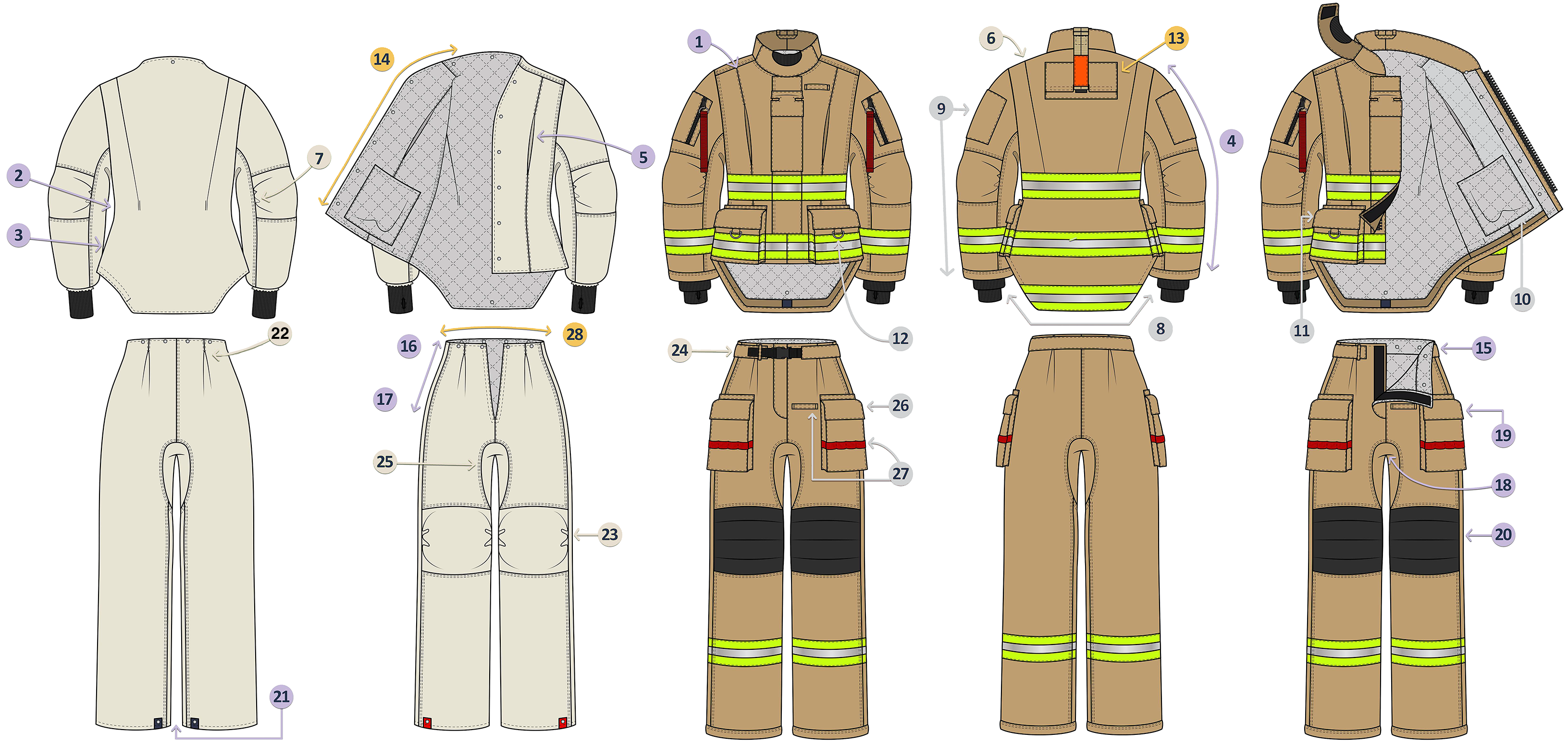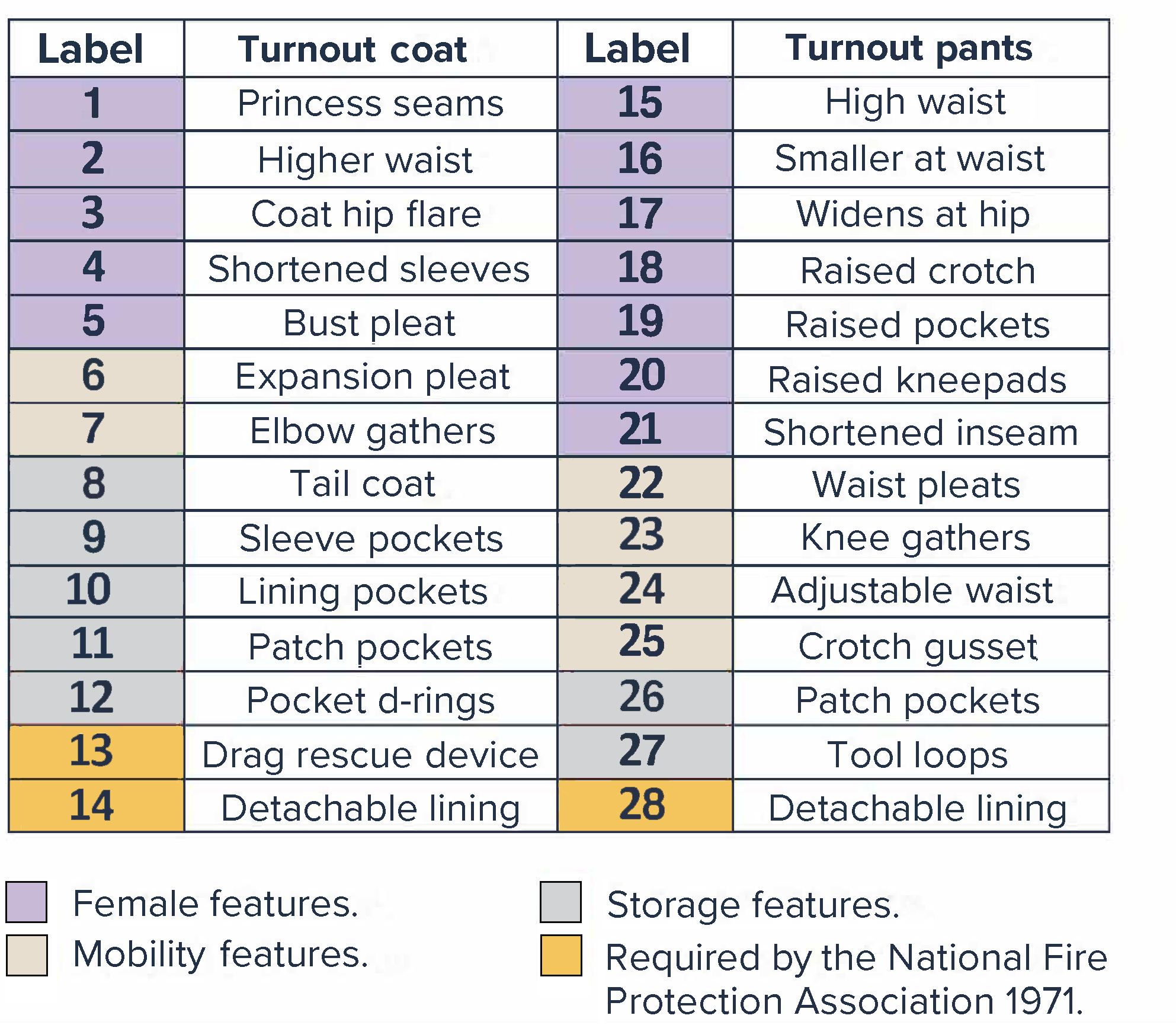Fashion studies researcher designs firefighting gear for women
A critical stitch
Fashion studies researcher designs firefighting gear for women
By Taylor Provine
Seek more
Watch a video about the research behind the firefighting gear.
Celeste Graciano is focused on finding the right fit in protective gear for firefighters who are women.
Graciano, senior in fashion studies in the College of Health and Human Sciences at Kansas State University, is working with faculty mentor Yingying Wu, assistant professor of fashion studies, who is leading the five-year project to understand problems with existing firefighting protective gear. The U.S. Department of Agriculture National Institute of Food and Agriculture is supporting the project. The team is creating new female-specific firefighting turnout coats and pants.
“Many firefighting personal protective equipment manufacturers do not provide gender-specific PPEs to firemen and firewomen,” Graciano said. “Commonly, both firefighting turnout coats and pants have been designed for men and sized down for women.”
This is problematic because it is critical to design gear that fits female body shapes well so that female firefighters can perform essential tasks, such as walking, reaching and climbing stairs while being well protected, Graciano added.
“Fit is a critical issue,” Graciano said. “For instance, if a firewoman’s gear is too big, it’s going to add extra weight. For female firefighters with smaller frames, that extra weight might be detrimental depending on what situation they are in.”
Using 3D body scans, the researchers were able to get a general representation for firewomen’s body size and shape, which they found to be different from the general female population.
Based on an understanding of firewomen’s body shape and size, as well as their concerns over existing firefighting turnout coats and pants, Graciano is developing new female-specific designs that address several problem areas discovered in existing gear. Some problem areas have included bust and hip areas that are too tight, waist areas that are too tight, sleeves that are too long or inseams that are too short. Other problems are often not enough pockets and knee pads that are in incorrect locations.
“We wanted to add princess seams so we could contour it more over the bust and taper it in at the waist,” Graciano said. “Other changes were for proportional needs, such as shortening the sleeves, coat and pants, and making them higher waisted.”
The researchers have created a prototype of the female-specific coat and pants, which includes many of these changes. Graciano drafted much of the pattern by hand and then digitized the paper patterns using a scanner in the Sunderland Foundation Innovation Lab at Hale Library. See page 28 to learn more about the capabilities of the innovation lab and how it helps researchers.
The team is currently working on a second prototype, which will include material updates that are similar to traditional firefighter gear.
Wu’s long-term project goals are to have the gear fitted in trials and patented to be commercially available for female firefighters. Graciano and Wu have presented this research at two international conferences and received a best paper award at the International Textile and Apparel Association annual meeting.
Wu said functional design research, particularly functional design research for underserved populations such as women, children and the elderly, is important and needed in the future.
“There are so many females in the workforce and their needs have been neglected,” Wu said. “Once this project is completed, we are going to expand our findings to include females in other industries as well.”

